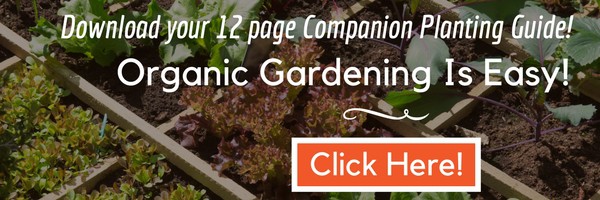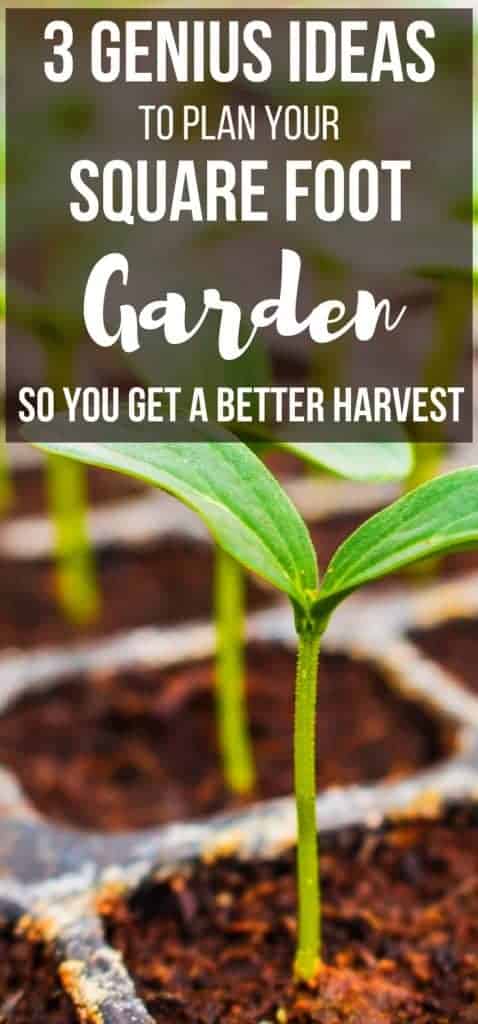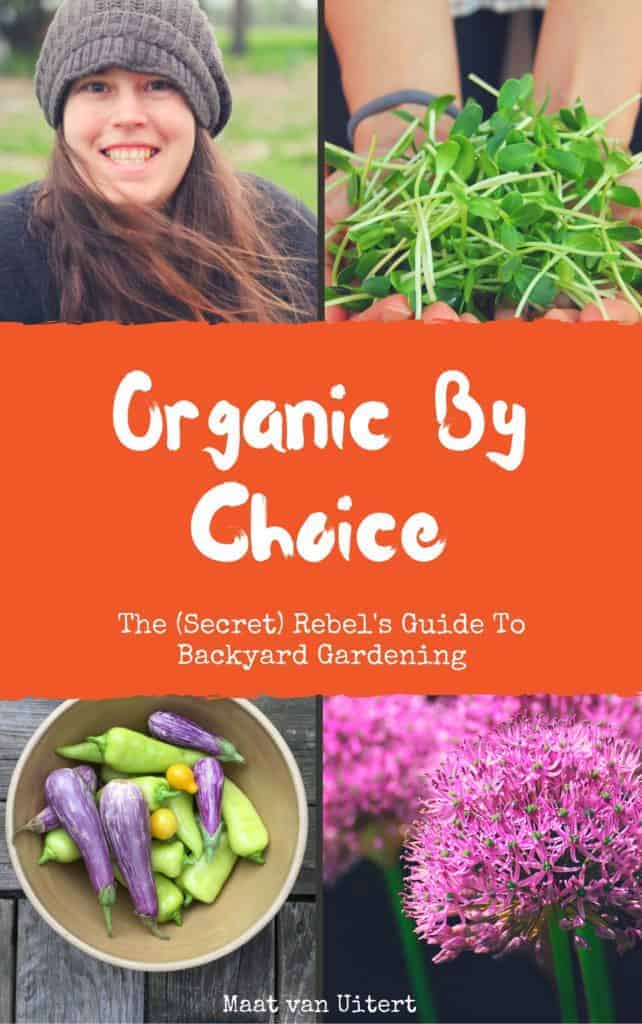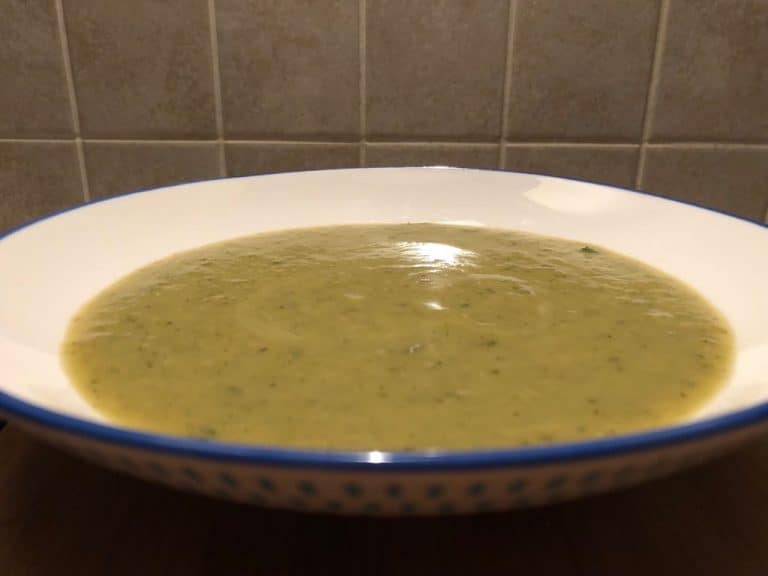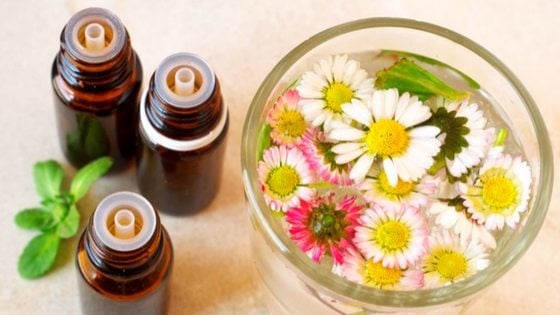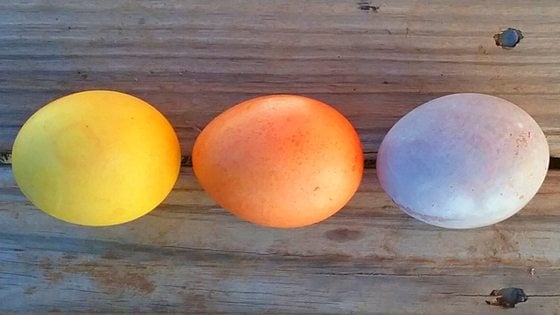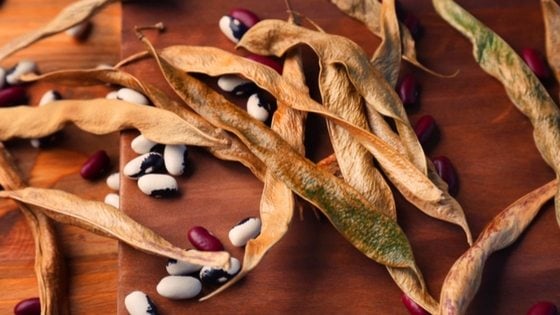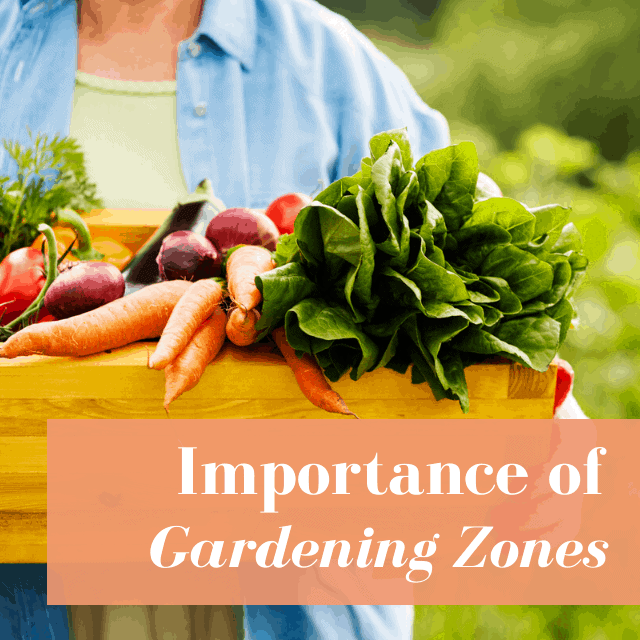Square foot gardening plant spacing seems like it should be simple, but if you don’t take companion planting into consideration, then you run the risk of your garden turning into a total flop.
NOTHING is worse than doing everything right, only to have a garden that doesn’t yield anything.
Ask me how I know – somehow, our sweet potato harvest this year didn’t go as planned. And it was disappointing to pull up the plants I’d waited 5 months to harvest only to find they never actually grew anything.
(Tomatoes on the other hand….we harvested nearly 100 pounds. You win some, you lose some, right?) Here’s my tips on growing tomatoes. This tomato gardening tip helped with our harvest, too!
Square foot gardening plant spacing consists of a few things:
- Figure out what you want to grow (and when to start the seeds indoors)
- Research how many plants can grow in each square foot garden space
- Consult a companion planting guide so you can be sure your vegetables will grow well next to each other.
What is square foot gardening & why does spacing matter?
Now, if you don’t know what square foot gardening is, it’s simply a garden segmented into 1 foot by 1 foot squares (I mean this method isn’t called square foot gardening for nothing, right?) and in each square, vegetables, herbs, or fruit are grown.
(If you want to read more about this, you can grab my book Organic By Choice: The (Secret) Rebel’s Guide To Backyard Gardening. Use coupon code SQUAREFOOT to save 10%!)
The amount of plants grown in one square foot depends on the type of plant – some squares will have more and some will have less.
Get it wrong, and your garden might not perform the way you expect because all the nutrients will either go to one plant, squeezing the others out.
Or the nutrients will be distributed among each plant, but it won’t be enough for each to flourish, and they’ll all be stunted or grow poorly.
Now, I’ve tried a lot of gardening methods. I mean a LOT. And as far as simplicity goes, square foot gardening is the bee’s knees, particularly because it makes plant spacing easy.
Square Foot Gardening lets you maximize your space so you get high yields from a small area. But just because it’s simple doesn’t mean you can ignore the needs of your vegetable plants.
If your square foot gardening plant spacing is off, then your ship is pretty much sunk before it even starts.
If your garden happens limited in size, then planning your square foot gardening plant spacing before digging into the dirt will let you make the best use of your gardening space that way.
If you only have a few feet, then growing onions, which need quite a bit of space, are heavy feeders, and need a long growing season probably isn’t your best choice.
Growing lettuce, tomatoes, and herbs will give you a greater yield in your tiny space and let you have a more satisfactory harvest and overall experience.
Want to know more about growing herbs? Click here to learn more about my book, Herbs In Your Backyard.
How to plan your square foot gardening plant spacing to be correct
Each January, before I begin even thinking of seed starting, I list all the herbs and vegetables I plan to grow as well as their individual needs. (I don’t personally grow fruit in my garden – they live elsewhere on the farm).
I also consult a table that tells me how many plants of each species should go in each square and double check my companion planting guide (you can download it here) so I know which veggies play nice and which don’t.
While this advice seems ultra simple and obvious, once you actually begin plotting your garden with square foot gardening plant spacing, you’ll notice that you might need to think a bit before deciding on a final plan.
If you get stuck, one easy fail-safe is that most plants do well being planted next to herbs (that being said, there are some plants that need lots of space, like onions, so it’s really best to use a companion planting guide.)
So, square foot gardening plant spacing is important, as is making sure your companion planting is on point.
Note: If you grab my bestseller Organic By Choice: The (Secret) Rebel’s Guide To Backyard Gardening, you’ll find several templates to help you plan your garden. Get it here & use coupon code SQUAREFOOT to save 10%
There’s also my favorite templates for a Salsa Garden, and All Tomato Garden, and more.
Here’s a brief list of popular vegetables and how far apart they should be and how many seeds to plant in each square:
Greens: 6 inches from each other, 4 plants
Carrots: 3 inches, 16 plants
Broccoli: 18 inches, 1 plant
Eggplant: 24 inches, 1 plant
After figuring out what you plan to grow, then draw out a grid the size of your garden (to scale) and segment your “garden” into 1 x 1 foot squares (again, to scale).
Start filling in the boxes with what you plan to grow – use your list, the square foot gardening template or list above, plus the companion planting guide to decide on a final arrangement.
If you get stuck, or want to grow several plants that won’t grow well together, then prioritize. Is growing onions really necessary, or will you or your family prefer more tomatoes for pizza or herbs for homegrown herbal tea (try growing some of these perennial herbs!)?
Using this guide, you should be well on your way to planning your square foot gardening plant spacing for a healthy, full harvest this summer!
More Tips for Square Foot Gardening:
- 10 Ways to Use Banana Peels in Your Garden
- 5 Pro Tips to Use Coffee Grounds in Your Garden
- 3 Ways to Use Rabbit Manure to Improve Your Garden
- Use Chicken Manure in Your Garden Like Your Grandparents Did
Maat van Uitert is a backyard chicken and sustainable living expert. She is also the author of Chickens: Naturally Raising A Sustainable Flock, which was a best seller in it’s Amazon category. Maat has been featured on NBC, CBS, AOL Finance, Community Chickens, the Huffington Post, Chickens magazine, Backyard Poultry, and Countryside Magazine. She lives on her farm in Southeast Missouri with her husband, two children, and about a million chickens and ducks. You can follow Maat on Facebook here and Instagram here.

